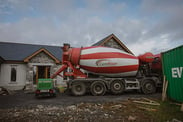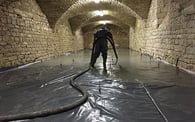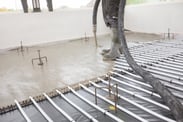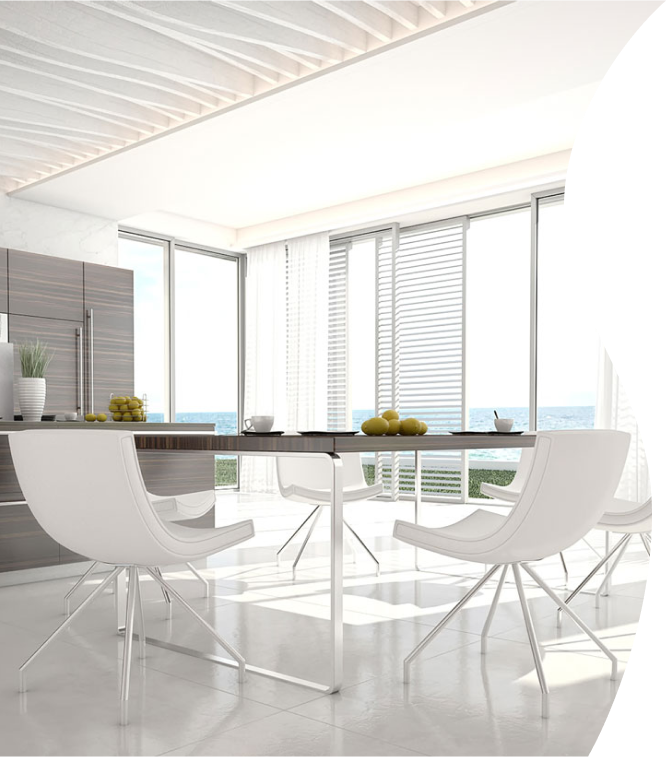Underfloor heating is seeing a surge in popularity in recent years and with it, floor screed for underfloor heating. As the world shifts focus towards greener processes and systems, condensing boilers and ground source heat pumps are being implemented more and more across the nation.
The construction industry’s new focus on energy efficiency has naturally led to underfloor heating systems being adopted as an industry standard. Recent reports show that UFH systems accounted for 7.7% of the heating industry market in 2019.
This is likely due to their compatibility and efficiency when partnered with condensing boilers, which run efficiently at very low water temperatures.
But what considerations need to be made when applying floor screed for underfloor heating? Both the liquid screed and the underfloor heating need to be considered together from the design stage to ensure that installation is successful.
These are some of the key considerations you need to make before and during the screeding process:
Common Causes Of Underfloor Heating Failure
A common pain point for underfloor heating installations is the gap in knowledge that occurs between specifying the UFH and the heating subfloor zone.
Underfloor heating is usually the first thing considered during the planning stages of a building. As the building’s mechanical and electrical (M&E) plans are usually a priority, this usually means the floor screed is an afterthought.
Knowledge gaps occur because the two systems are designed as completely separate elements and installed by individual, unrelated professionals. This causes failed installations, damaged reputations, and more often than not, disgruntled clients.
Screed applicators are often called back to sites to address cracks within the screed after installation. Naturally, the screed is often seen as the cause of the problem. However, in many cases, the heating subfloor zone is the root cause.
It’s imperative that proper design and planning is carried out early. This will help mitigate cracking within the screed surface and ensure the layout of the heating pipes is carefully thought out.
The most common factors to cause failures in underfloor heating systems are:
- Insufficient planning for floor layout and floor finish in early specification
- Incorrect installation of the Underfloor Heating or Screed
- Insufficient time left for screed to dry
- Poorly mixed screed
- Too much moisture present in the screed
- Problems during the design process of UFH systems
- Movement in floor structure due to instability
Considerations When Applying Underfloor Heating Floor Screed
A bad installation can severely reduce thermal efficacy. Before applying the screed, there are some key considerations you need to make to ensure a successful installation:
- Make sure the area that is going to be screeded is even and flat, this will allow your screed to be of an even thickness.
- Ensure the output of the heating system is taken into consideration, along with the size of the floor area, point loading, and thickness of the specified screed
- Carefully consider the placement of movement or expansion joints in the early planning stages of the project. These will mitigate cracking in the screed during installation, this should ideally also be coordinated with floor finishes.
- If you’re a screeder…Before laying the screed, use tripod depth gauges to ensure the floor is level and ensure the screed is mixedin accordance with the manufacturer’s guidelines
Cemfloor screeds should always be used in accordance with the ‘Code of Practice For Pumpable Self-Smoothing Screeds’. We recommend that the application of the floor screed for underfloor heating is applied by a specialist screeding contractor who has completed the necessary Cemfloor training.
Choosing The Right Screed For Underfloor Heating
When it comes to screeding over underfloor heating systems there are two main types used within the industry. Dry Screeds and Liquid Self-Levelling Screeds.
For the most part, liquid screeds offer distinct advantages over their dry counterpart. Most importantly, drying times are significantly reduced when using liquid floor screeds. This can be further enhanced by the use of dehumidifiers. It’s because of this, that liquid screed is often deployed in vast industrial or commercial projects.
The self-compacting properties of a liquid screed, such as Cemfloor Therm ensure that the heating system’s pipes are completely encapsulated. The absence of any air pockets around the pipes ensures maximum thermal conductivity from the pipes to the screed’s surface.
Liquid screeds are also highly recommended due to the reduced depths at which they can be installed. It’s very important to ensure reduced screed thickness, as this will allow for better thermal performance and improve the way the UFH distributes heat.
Conclusion
These are just a handful of the initial considerations you should make when applying floor screed over underfloor heating.
To avoid issues down the line, such as cracks on the screed’s surface, we would always recommend that both the UFH and floor screed are carefully considered as a pair during the design process.
Liquid floor screeds, such as Cemfloor Therm, offer architects and contractors a solution which will reduce drying times and improve thermal efficiency due to reduced screed depths and should always be considered.
Cemfloor, The Cement-Based Liquid Floor Screed
Whether your project is a commercial or domestic floor, a wet room, contains underfloor heating, unbonded, floating, new build, renovation or multi-storey project; Cemfloor offers cement-based liquid screed solutions for any project.
Designed with ease of installation in mind, Cemfloor Therm has been manufactured with self-levelling and self-compacting properties to speed up the installation process. It can also be installed at much thinner depths compared to other traditional screeds, ensuring ultimate controllability of the underfloor heating system.
If you have any questions about applying floor screed over underfloor heating systems, speak to one of our experts today.
We are always happy to help with any enquiries.







.png?width=300&height=122&name=Untitled%20design%20(34).png)
